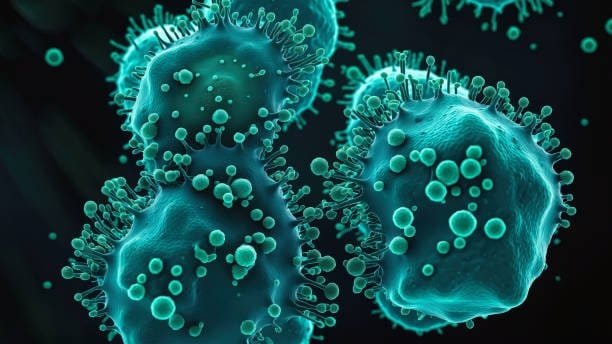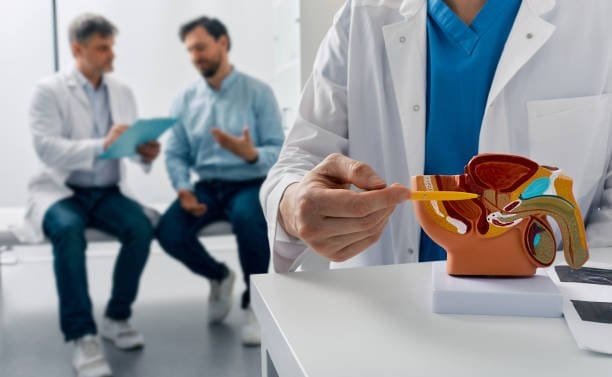Prostate Cancer
Prostate cancer is a major concern for men’s health and affects millions of men globally. Being perhaps the most popular disease for men, it is crucial to identify how it evolves, other possible influences that can contribute to that, and the remedies available. This article aims to provide a definition of prostate cancer, causes that lead to its development, consequences of prostate cancer that one has to face, how to counteract those consequences, and, finally, available treatment options.

What is prostate cancer?
Prostate cancer generates in the prostate organ, a little organ like a pecan-formed organ located at the base of the male organ below the bladder. This organ plays one of the key roles in the male reproductive system that produces fresh fluid that nourishes and carries sperm. That is when prostate cancer occurs at the time that cells in the prostate begin to grow uncontrollably.
Causes and Chance Variables
While the specific reason for prostate cancer stays obscure, a few risk factors have been distinguished:
- Age: The risk of cancer increases considerably with age, more so after the age of 50.
- Family ancestry: This implies that the gnome of men with direct relatives who have had prostate cancer is in higher risk.
- Race: African American men have a higher likelihood of prostate cancer compared with other racial assemblies.
- Hereditary qualities: Some of the acquired quality transformations could create the gamble.
- Diet: A regular diet that includes red meat as well as dairy merchandise could also play a role in the enhancement of the risk.
- Heftiness: Obesity calls or corpulence may increase the risk of forceful prostate cancer.
It is important to take notice of the fact that the existence of at least one risk factor does not guarantee that it will cause prostate cancer. On the other hand, men with no realized gamble element can in any case reinforce the illness.
Symptoms
During the initial stages, primarily, cancer often does not produce effects that are easily discernible. As the infection advances, a few men might gain insight:
Consistent stream and more so at night Complex.
- difficulties with starting or stopping the flow
- Poor or slow urinary flow
- Presence of blood in the urine or spermadaptive styles
- The pain associated with it or using during the act of peeing
The second one was distress at the tumor site or in the pelvic area.
- Erectile brokenness
- Persistent pain in the lumbar region or gluteal and thigh region
It’s memorable important that these side effects can also be caused by other factors, such as BPH. In the situation that you suffer from any of these side effects, consult your medical care provider for proper screening.

Analysis
Prostate cancer should be detected at an early stage so that it can be treated effectively. Screening techniques include:
Prostate-Explicit Antigen (public service announcement) Test:
Assay that indexes the intensity of public service announcement actions that might be elevated in men with cancer.
Digital Rectal Examination (DRE):
A physical examination in which the doctor uses his or her fingers to examine the prostate for any abnormality.
On the off chance that these tests propose the chance of prostate cancer, further demonstrative methods might be suggested:
Prostate biopsy
Imaging tests may include X-ray, CT sweep, or bone output.
- Genomic testing
Treatment Choices
Management of prostate cancer depends on some factors, specifically the stage of the disease, the condition of the patient’s health, and his or her preferences. Normal treatment choices include:
Dynamic Reconnaissance
About the nature of generally safe, slow-growing prostate cancer, specialists could advise watching the disease without immediate intervention.
Medical procedure
As for radical prostatectomy, it means eradicating the whole prostate organ as well as the surrounding tissues. This should be attainable through conventional open a medical procedure or only mildly invasive ways such as laparoscopic or mechanically assisted a medical procedure.
Radiation Treatment
Other than pillar radiation treatment (external beam radiation therapy) or interior radiation known as brachytherapy, it may be used to eliminate disease cells. Conserving the quality of the foods we eat We can diet by consuming healthy foods that include antioxidant and anti-cancer materials.
Chemical Treatment
Also known as androgen deprivation therapy, or ADT, this therapy reduces male chemicals to prevent the growth of disease.
Chemotherapy
In the event that prostate cancer is innovative and has commenced to encompass several parts of the body, chemotherapy medications could be applied to destroy malignant growth cells.
Immunotherapy
This creates excitement within the body’s safe network to fight disease cells.
Designated Treatment
These medications work actively to prevent the development of certain features well-known by the disease cells within the body.
Avoidance and Hazard Decrease
While there’s no dependable method for forestalling prostate cancer, certain way of life changes might assist with decreasing the gamble:
Keep a sound eating regimen:
Consume a lot of organic products, vegetables, and grains in their entirety. Reduce consumption of meats, particularly red meats with high content of saturated fats and high-fat dairy products.
Workout consistently:
Nothing is kept 30 minutes of moderate activity is performed most of the time, which is 5 days a week.
Keep a sound weight:
Obesity is related to an increased risk of forceful prostate cancer.
Think about your nutrient admission:
A couple of studies suggest that vitamin D and selenium have possible detoxification effects against prostate cancer; however, there is scarcity of evidence.
Converse with your primary care physician about screening:
Discuss the advantages and disadvantages of prostate cancer with your medical services supplier, especially if you are at risk.
Living with prostate cancer
Challenging, yes, a prostate cancer determination can be; however, many a man can lead full, productive lives during and after therapy. It can support oneself, seek advice, and engage in open communication with medical care providers and friends and family for dealing with the psychological and physical aspects of prostate cancer.

Conclusion
Prostate cancer is actually a complex disease that affects many men across the globe. It is important to identify and manage the gamble variables, side effects, and treatment options for this condition in a proper and early manner. Holding extra information, adhering to a sound life, and processing a close working relationship with healthcare vendors, men ought to be capable of locating preventive measures to preserve prostate health and their well-being on a broad range.
FAQs
When should male screening for prostate cancer start?
The American Malignant Growth Society likewise recommends that men inspect prostate cancer screening with their PCP at:
- Age 40 for men at normal gamble
- Age 45 for men at high gamble including those of black origin or a first degree relative shown to have Prostate cancer before the age of 65.
- Age 40 for men if the man is at a considerably higher risk than if he had one first-degree relative who has prostate cancer at an early age.
Can prostate cancer be restored as soon as it gets early?
If diagnosed early, then prostate cancer has a very good prognosis of being treated. Nonetheless, if the cancer is confined to the prostate (Stage A or B), known as restricted prostate cancer, the 5-year relative endurance pace is almost 100 percent. Focusing on such risks lays emphasis on common physicals and the possibility of speaking to your medical care provider about your screening options.


